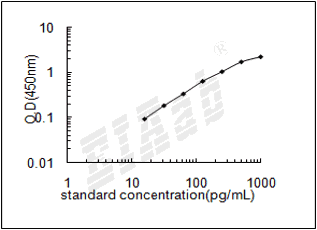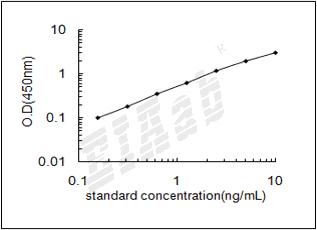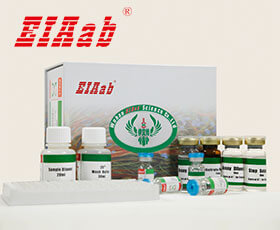PCSK9 (基因名), Proprotein convertase subtilisin/kexin type 9 (蛋白名), pcsk9_human.
产品名称:
Human PCSK9/ Proprotein convertase subtilisin/kexin type 9 Recombinant Protein
蛋白前体加工酶枯草溶菌素
货号:
R0307h
商标:
EIAab®
监管等级:
别名:
Neural apoptosis-regulated convertase 1, Proprotein convertase 9, Subtilisin/kexin-like protease PC9, NARC-1, PC9, PSEC0052, NARC1
序列号:
Q8NBP7
来源:
E.coli
种属:
Human
标签:
His
序列:
31-152aa
预估分子量:
13.42 kDa (monomer)
纯度:
>90% by SDS-PAGE
浓度:
Reconstitution Dependent
形态:
Liquid
内毒素水平:
Please contact protein@eiaab.com The technician for more information.
应用:
存储缓冲液:
50mM NaH2PO4, 500mM NaCl Buffer with 500mM Imidazole, 10%glycerol(PH8.0)
存储:
Store at -20°C. (Avoid repeated freezing and thawing.)
研究领域:
Cardiovascular
R&D 技术数据
更多信息,请参阅手册,或联系我们的技术支持: tech@eiaab.com.
基因位点
PCSK9 Gene in genomic location: bands according to Ensembl, locations according to GeneLoc (and/or Entrez Gene and/or Ensembl if different)

通用注释
亚单元:
Monomer. Can self-associate to form dimers and higher multimers which may have increased LDLR degrading activity. The precursor protein but not the mature protein may form multimers. Interacts with APOB, VLDLR, LRP8/APOER2 and BACE1. The full length immature form (pro-PCSK9) interacts with SCNN1A, SCNN1B and SCNN1G. The pro-PCSK9 form (via C-terminal domain) interacts with LDLR. Interacts (via the C-terminal domain) with ANXA2 (via repeat Annexin 1); the interaction inhibits the degradation of LDLR (PubMed:18799458).
功能:
Crucial player in the regulation of plasma cholesterol homeostasis. Binds to low-density lipid receptor family members: low density lipoprotein receptor (LDLR), very low density lipoprotein receptor (VLDLR), apolipoprotein E receptor (LRP1/APOER) and apolipoprotein receptor 2 (LRP8/APOER2), and promotes their degradation in intracellular acidic compartments (PubMed:18039658). Acts via a non-proteolytic mechanism to enhance the degradation of the hepatic LDLR through a clathrin LDLRAP1/ARH-mediated pathway. May prevent the recycling of LDLR from endosomes to the cell surface or direct it to lysosomes for degradation. Can induce ubiquitination of LDLR leading to its subsequent degradation (PubMed:18799458, PubMed:17461796, PubMed:18197702, PubMed:22074827). Inhibits intracellular degradation of APOB via the autophagosome/lysosome pathway in a LDLR-independent manner. Involved in the disposal of non-acetylated intermediates of BACE1 in the early secretory pathway (PubMed:18660751). Inhibits epithelial Na(+) channel (ENaC)-mediated Na(+) absorption by reducing ENaC surface expression primarily by increasing its proteasomal degradation. Regulates neuronal apoptosis via modulation of LRP8/APOER2 levels and related anti-apoptotic signaling pathways.
亚细胞位置:
Cytoplasm
Secreted
Endosome
Lysosome
Cell surface
Endoplasmic reticulum
Golgi apparatus
Autocatalytic cleavage is required to transport it from the endoplasmic reticulum to the Golgi apparatus and for the secretion of the mature protein. Localizes to the endoplasmic reticulum in the absence of LDLR and colocalizes to the cell surface and to the endosomes/lysosomes in the presence of LDLR. The sorting to the cell surface and endosomes is required in order to fully promote LDLR degradation.
数据库链接
UniGene:
SMR:
STRING:
KEGG:
MIM:
Pfam:
Uniprot:
该产品尚未在任何出版物中被引用。
[1].
"The molecular basis of familial hypercholesterolemia in Lebanon: spectrum of LDLR mutations and role of PCSK9 as a modifier gene."
[2].
"A spectrum of PCSK9 alleles contributes to plasma levels of low-density lipoprotein cholesterol."
[3].
"The secretory proprotein convertase neural apoptosis-regulated convertase 1 (NARC-1): liver regeneration and neuronal differentiation."
[5].
"The E32K variant of PCSK9 exacerbates the phenotype of familial hypercholesterolaemia by increasing PCSK9 function and concentration in the circulation."
[6].
"Loss-of-function mutation R46L in the PCSK9 gene has little impact on the levels of total serum cholesterol in familial hypercholesterolemia heterozygotes."
[7].
"Gene-centric association signals for lipids and apolipoproteins identified via the HumanCVD BeadChip."
[9].
"Mutations and polymorphisms in the proprotein convertase subtilisin kexin 9 (PCSK9) gene in cholesterol metabolism and disease."
[10].
"Healthy individuals carrying the PCSK9 p.R46L variant and familial hypercholesterolemia patients carrying PCSK9 p.D374Y exhibit lower plasma concentrations of PCSK9."
[1].
人蛋白前体加工酶枯草溶菌素(PCSK9)重组蛋白是否是无菌的?
蛋白试剂瓶和蛋白保存液是经过高压灭菌的,但也不能保证蛋白是完全无菌的。如果要求蛋白是无菌的,可以用0.2微米的滤器对蛋白进行过滤。
[2].
人蛋白前体加工酶枯草溶菌素(PCSK9)重组蛋白的保存缓冲液是什么?
纯化后的蛋白保存在PBS(58mM Na2HPO4, 17mM NaH2PO4, 68mM NaCl, pH7.4)里,并往里面加入500mM咪唑和10%甘油。
[3].
怎样确定人蛋白前体加工酶枯草溶菌素(PCSK9)重组蛋白的浓度?
蛋白浓度的确定没有一个统一的标准,这主要取决于蛋白的氨基酸序列。伊艾博是根据不同测试的组合来测定蛋白浓度。考马斯亮蓝法、BCA法、氨基酸序列和氨基酸全序列分析法等都用来测定蛋白浓度。
[4].
人蛋白前体加工酶枯草溶菌素(PCSK9)重组蛋白蛋白保存条件是怎样的?
蛋白应保存在 -20℃或 -80℃条件下,为了避免反复冻融,可以将蛋白分装成小份保存。
[5].
人蛋白前体加工酶枯草溶菌素(PCSK9)重组蛋白是否可以用于活体实验?
重组蛋白没有用于任何的活体实验,因此蛋白的活性和半衰期是不确定的。
[6].
人蛋白前体加工酶枯草溶菌素(PCSK9)重组蛋白的保质期是多久?
在适当的保存条件下,从购买之日起蛋白可以稳定保存6-12个月。适当的保存条件是:蛋白保存在-20°C o或 -80℃,保证蛋白的保存浓度高于0.1mg/ml,限制蛋白反复冻融的次数。我们公司常规的质量检测保证所有产品在销售时都有可接受的生物活性。但是我们不能控制终端用户蛋白的保存条件。如果产品在有效期内出现问题,请联系我们的技术支持。
[7].
你们蛋白和抗体的报价是怎么样的?
我们将根据你需要的蛋白和抗体的大小进行报价。
[8].
人蛋白前体加工酶枯草溶菌素(PCSK9)重组蛋白是否能够提供蛋白片段?
我们现有的人的蛋白的序列可以有很多。你可以选择你感兴趣的靶向部分,我们将会按您的需求提供蛋白和抗体。
[9].
人蛋白前体加工酶枯草溶菌素(PCSK9)重组蛋白的货期或发货时间一般是多长?
具体指标的货期需要确定。最快一周,最长可能一个月。
反馈墙
评论数 : 0
所有用户
所有用户
默认排序
默认排序
最近
早期
目前还没有评论。






通知
规格
数量
单价 (¥)
小计 1 (¥)
小计 2:
¥

规格
数量
单价 (¥)








 验证序列:
验证序列:




 折扣:
折扣: